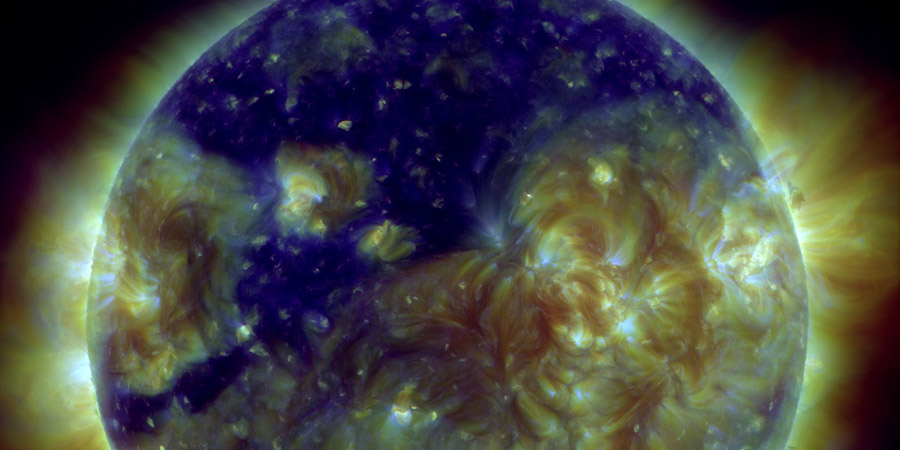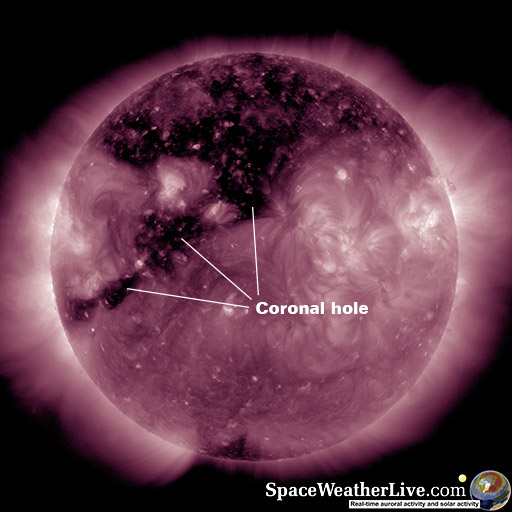Coronal hole faces Earth, Quiet Sun
Wednesday, 2 December 2015 18:16 UTC

A very large coronal hole is now facing Earth. This northern hemisphere polar coronal hole runs all the way to the solar equator and we will likely experience multiple days with enhanced solar wind conditions at Earth.
Solar wind flowing from this coronal hole will likely start to influence our planet in about 3 days from now which would be this coming Saturday. Minor G1 geomagnetic storming conditions will be possible this weekend. Also at the start of next week we should still be under the influence of this coronal hole.

Image: A large coronal hole faces Earth as can be seen on this image from NASA SDO.
If we take a look at solar flaring we can conclude that the Sun is quiet right now. Sunspot region 2458 produced a couple of weak C-class solar flare and even some minor coronal mass ejection but these are not expected to arrive at Earth. None of the sunspot regions currently on the Earth-facing solar disk are complex enough for M or X-class solar flares.
The solar wind speed is just above the 400km/s and the direction of the IMF (Bz) is mostly southward. The Kp-index is not expected to go above 3 in the next 24 hours but this is enough for decent high latititude aurora displays.
Thank you for reading this article! Did you have any trouble with the technical terms used in this article? Our help section is the place to be where you can find in-depth articles, a FAQ and a list with common abbreviations. Still puzzled? Just post on our forum where we will help you the best we can!
Latest news
Latest forum messages
Support SpaceWeatherLive.com!
A lot of people come to SpaceWeatherLive to follow the Solar activity or if there is a chance to see the aurora, but with more traffic comes higher costs to keep the servers online. If you like SpaceWeatherLive and want to support the project you can choose a subscription for an ad-free site or consider a donation. With your help we can keep SpaceWeatherLive online!
Space weather facts
| Last X-flare | 2025/06/19 | X1.9 |
| Last M-flare | 2025/10/03 | M1.2 |
| Last geomagnetic storm | 2025/10/03 | Kp5 (G1) |
| Spotless days | |
|---|---|
| Last spotless day | 2022/06/08 |
| Monthly mean Sunspot Number | |
|---|---|
| September 2025 | 129.8 -3.7 |
| October 2025 | 145.3 +15.5 |
| Last 30 days | 132.1 -0.4 |





